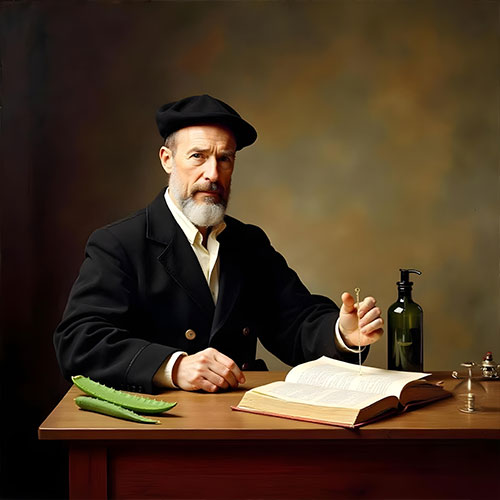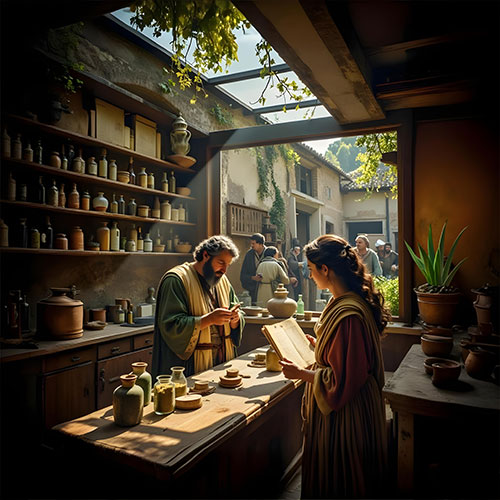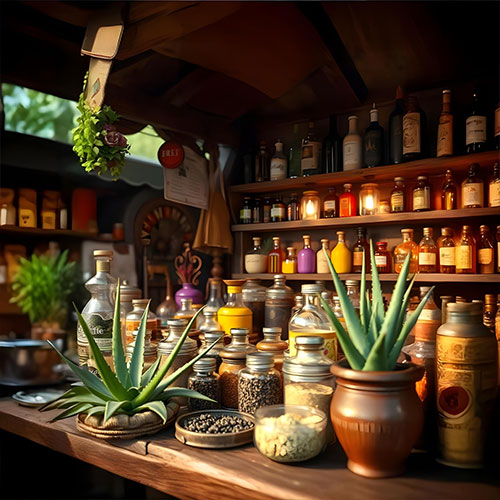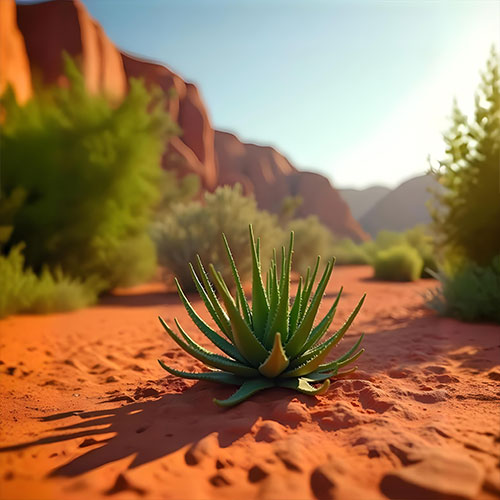






During the Crusades, soldiers traveling to the Middle East discovered the wonders of aloe vera. They were captivated by its healing properties, widely used in the region to treat wounds and other ailments. When these soldiers returned home, they brought with them not just tales of battle but also the knowledge of aloe vera. This marked the introduction of the plant to European apothecaries, where it quickly gained popularity for its medicinal virtues.
In the Renaissance, a time of revival in art, science, and medicine, aloe vera became a prized asset in apothecaries across Europe. Visionaries like Paracelsus, a Swiss physician and alchemist, extolled its virtues, recognizing its remarkable ability to promote healing. Aloe vera’s versatility made it a staple in various remedies, catering to the era’s burgeoning interest in natural cures.
The 17th and 18th centuries witnessed the golden age of apothecaries. During this period, aloe vera emerged as a cornerstone in the preparation of treatments for a multitude of conditions, from inflammation to infections. Apothecaries relied on its gel and extracts, crafting ointments, salves, and other concoctions that became household staples. Its reputation as a reliable remedy grew, intertwining with the era’s advances in herbal medicine.
Aloe vera's impact extended beyond medicine to agriculture and local ecosystems. Farmers often relied on its gel to soothe sunburnt skin after long hours under the tropical sun. Meanwhile, the plant's presence in fields alongside other crops supported pollinators like bees and butterflies, contributing to ecological balance. Its cultivation provided a symbol of resilience and sustenance, reflecting the plant's adaptability and usefulness.
As herbal medicine gained momentum, aloe vera became an integral part of complex herbal remedies. Apothecaries began to process the plant into powders, tinctures, and ointments, making it more portable and accessible. These preparations were sold in traveling markets and to burgeoning cities, reflecting the era’s fascination with the therapeutic powers of nature.
By the 19th century, the advent of modern medicine brought profound changes to healthcare practices. Synthetic drugs and more advanced treatments overshadowed many traditional remedies, including aloe vera. While its widespread use in apothecaries waned, the legacy of aloe vera endured within the traditions of herbal medicine. Its reputation as a natural healer persisted, laying the foundation for its resurgence in contemporary skincare and wellness products.
Coming Up Next: Aloe Vera in Ancient Art and Literature!
Journey through history to uncover how aloe vera’s beauty and healing powers were celebrated in ancient art and literature. From depictions in sacred carvings to mentions in timeless texts, this chapter delves into how civilizations immortalized this remarkable plant in their cultural expressions. Don’t miss the fascinating tale of aloe vera’s artistic and literary legacy!